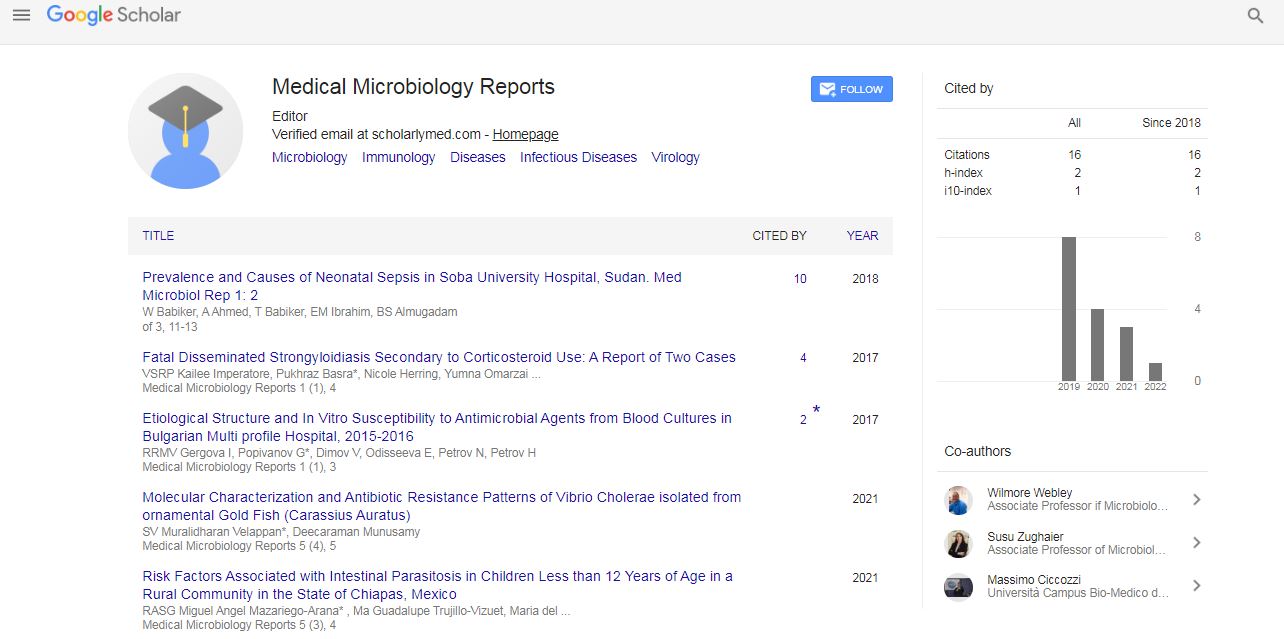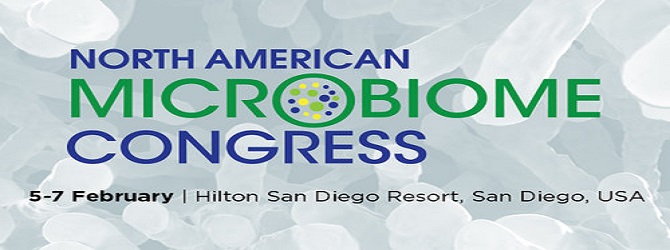Perspective, Med Microbiol Rep Vol: 7 Issue: 4
Comprehending Healthcare Infections through Microbes
Jianbo Shichang*
1Department of Tropical Disease Control, Sun Yat-Sen University, Guangzhou, China
*Corresponding Author: Jianbo Shichang,
Department of Tropical Disease
Control, Sun Yat-Sen University, Guangzhou, China
E-mail: jianshi@mail.sysu.edu.cn
Received date: 24 November, 2023, Manuscript No. MMR-24-128539;
Editor assigned date: 27 November, 2023, PreQC No. MMR-24-128539 (PQ);
Reviewed date: 11 December, 2023, QC No. MMR-24-128539;
Revised date: 18 December, 2023, Manuscript No. MMR-24-128539 (R);
Published date: 26 December, 2023, DOI: 10.4172/MMR.1000355
Citation: Shichang J (2023) Comprehending Healthcare Infections through Microbes. Med Microbiol Rep 7:4.
Description
In the field of medical microbiology, the complicated connection between microorganisms and human health emerges as a captivating fiction. Examining the field of healthcare infections requires a comprehensive understanding of microbes, their behavior and the dynamical connection these individuals establish with the human body. The profound realization at the core of the analysis is that microbes, both bacteria and viruses, are significant entities in the medical field. These microscopic entities have the potential to cause a spectrum of infections, ranging from mild ailments to life-threatening diseases. Understanding the nature of these infections is essential for healthcare professionals, as it informs not only the diagnostic process but also the development of customized treatment strategies. Medical microbiology demonstrates the variety of pathogens that support healthcare infections. Bacteria, with their diverse shapes, sizes and structures, exhibit an array of virulence factors that enable them to colonize and invade host tissues. Viruses, on the other hand, are obligate intracellular parasites, relying on host cells for replication.
The study of microbial characteristics forms the foundation for understanding the complexities of infection, guiding healthcare practitioners in identifying the causative agents and predicting the course of disease. Diagnostic methodologies play a pivotal role in comprehending healthcare infections, serving as the key to unraveling microbial mysteries. Traditional microbiological techniques, such as culturing and staining, provide inputs into the morphology and growth characteristics of pathogens. However, the environment of diagnostic microbiology has evolved with the advent of molecular methods.
Polymerase Chain Reaction (PCR), nucleic acid sequencing and immunoassays enable the rapid and precise identification of microbial DNA, RNA or antigens, revolutionizing the speed and accuracy of diagnostics. The expedition of comprehending healthcare infections through microbes is strongly connected to the field of infectious diseases. These conditions that are caused by microbial agents, present a myriad of challenges to healthcare systems globally.
The environment of healthcare-associated infections introduces a distinct dimension to this expedition. Nosocomial infections, acquired within healthcare settings, pose a significant challenge in patient care. The sources of these infections are diverse, ranging from surgical procedures and medical devices to the healthcare units. The recognition of healthcare-associated infections requires a meticulous investigation into the directions of transmission, risk factors and preventive measures, with medical microbiologists at the beginning of these efforts. Antimicrobial resistance emerges as a vital theme in the depiction of awareness on healthcare infections through microbes. Medical microbiologists actively engage in surveillance of antibiotic resistance patterns, guiding clinicians in selecting appropriate therapies and advocating for prudent antibiotic use to preserve the efficacy of existing treatments. The collaborative nature of comprehending healthcare infections is evident in the synergy between medical microbiologists, clinicians and public health experts. Surveillance networks, such as the Centers for Disease Control and Prevention (CDC) in the United States and the World Health Organization (WHO) globally, facilitate the monitoring of infectious diseases and the identification of emerging threats. Rapid communication and data sharing among these stakeholders contribute to a collective response to healthcare infections, emphasizing the importance of interdisciplinary collaboration.
Conclusion
Advances in technology, particularly in the field of genomics, have enhanced the precision and depth of microbial analysis. Wholegenome sequencing allows for a comprehensive understanding of the genetic composition of microbial strains, enabling epidemiological investigations and the tracking of disease outbreaks. The integration of big data analytics and artificial intelligence further augments the capabilities of medical microbiologists in comprehending healthcare infections through the analysis of vast datasets and the prediction of trends. Comprehending healthcare infections through microbes is an ongoing and dynamic expedition that spans the field of microbiology, medicine and public health.
 Spanish
Spanish  Chinese
Chinese  Russian
Russian  German
German  French
French  Japanese
Japanese  Portuguese
Portuguese  Hindi
Hindi 
